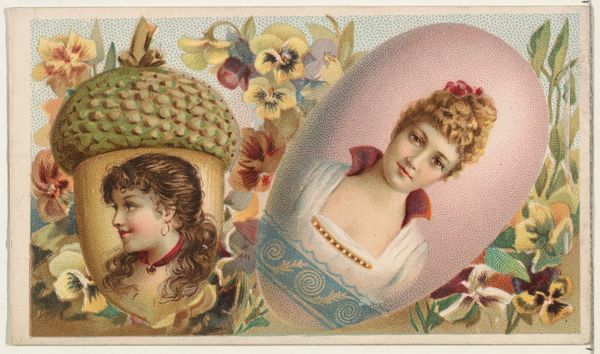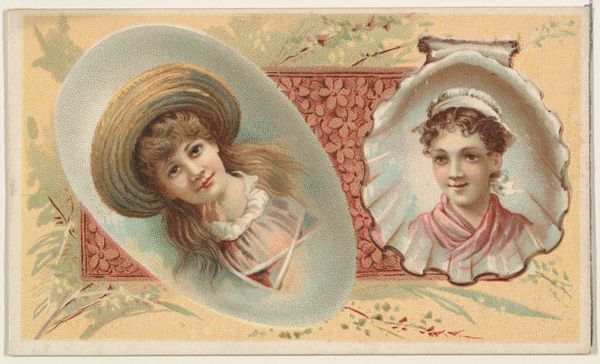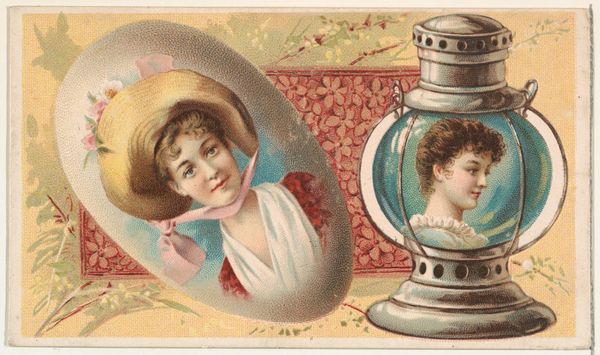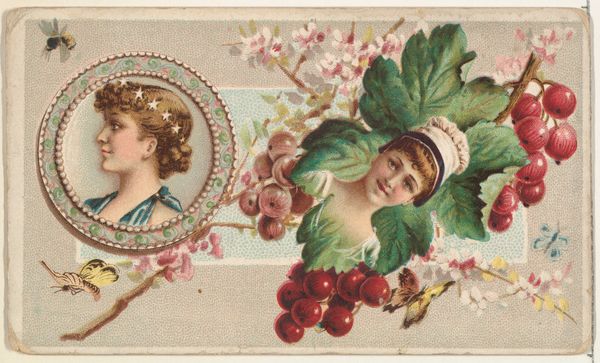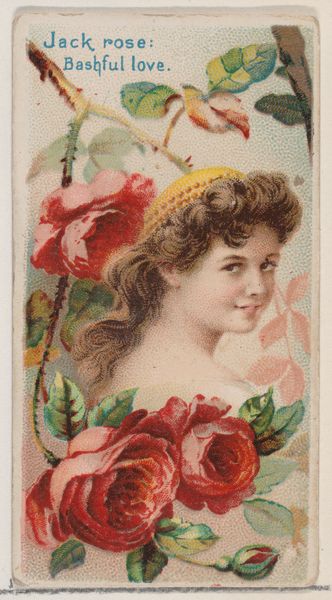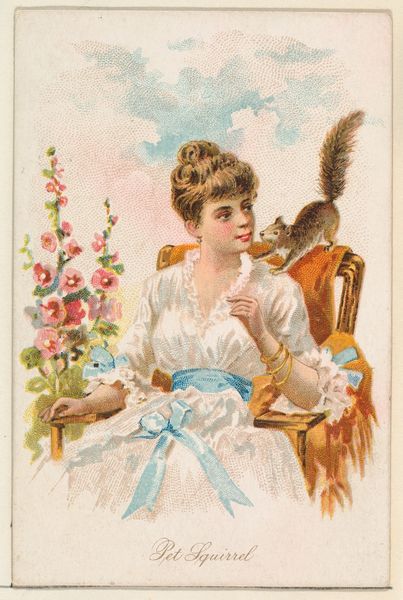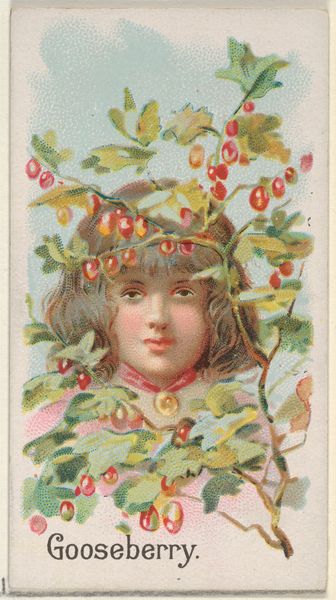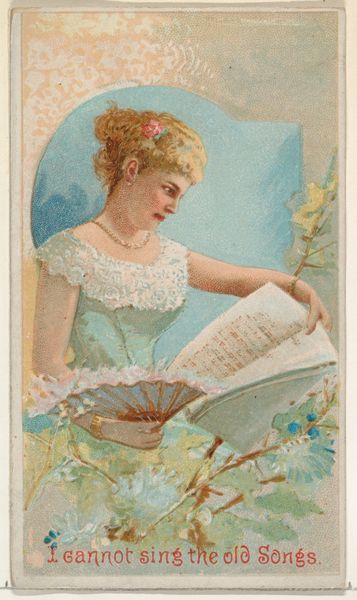
Teapot, from the Miniature Novelties series (N120) issued by Duke Sons & Co. to promote Honest Long Cut Tobacco 1891
0:00
0:00
drawing, lithograph, print
#
drawing
#
art-nouveau
#
lithograph
# print
#
art nouveau
#
watercolour illustration
#
decorative-art
#
watercolor
Dimensions: Sheet: 2 1/2 × 4 1/4 in. (6.3 × 10.8 cm)
Copyright: Public Domain
Curator: Well, isn't this charming! Editor: Indeed! It’s light and airy with soft, pastel colours—the composition leads my eye gently across the artwork. Curator: This is a trade card lithograph, dating from 1891. It comes from a series of miniature novelties put out by W. Duke, Sons & Co. to advertise their Honest Long Cut Tobacco. Editor: Oh, an advertisement! That shifts my perspective. The symmetry is pleasing—two oval forms facing each other, framed by florals. Are those pansies? Curator: Yes, and they epitomize the aesthetics of Art Nouveau. But the main thrust here isn’t simply decoration, it's commerce! Consider how these cards were distributed in cigarette packages, designed to be collected, traded…essentially, forming an early advertising campaign in print. Editor: The mirrored portraiture must have been enticing. Both portraits feature an elaborate depiction of a young woman; however, it also makes the overall impression seem almost staged. Do you get that? Curator: Absolutely! There is the constructed nature of these images, the way femininity is portrayed and marketed in this era. They were banking on aspirations…a certain aspirational lifestyle linked to this brand. The idea of leisure is there. Editor: You’re right, the light in the two ovals differs which suggests the women could not possibly be placed within the same atmospheric lighting conditions. As though it is about two parallel worlds of luxury instead. Curator: Precisely! The card performs cultural work. This era faced rising social anxieties fueled by industrialization and immigration, images like these constructed desirable archetypes of femininity. So consumption became about belonging to a specific societal vision. Editor: Seeing that way makes me look at all the stylistic elements such as color and shape again to find the techniques the designer would deploy in getting these messages across. Curator: Right. That art nouveau ornamentation? It’s not simply aesthetic; it’s loaded! It embodies these cultural meanings. Editor: I will certainly carry this context the next time I admire the swirling lines in another art nouveau composition.
Comments
No comments
Be the first to comment and join the conversation on the ultimate creative platform.
